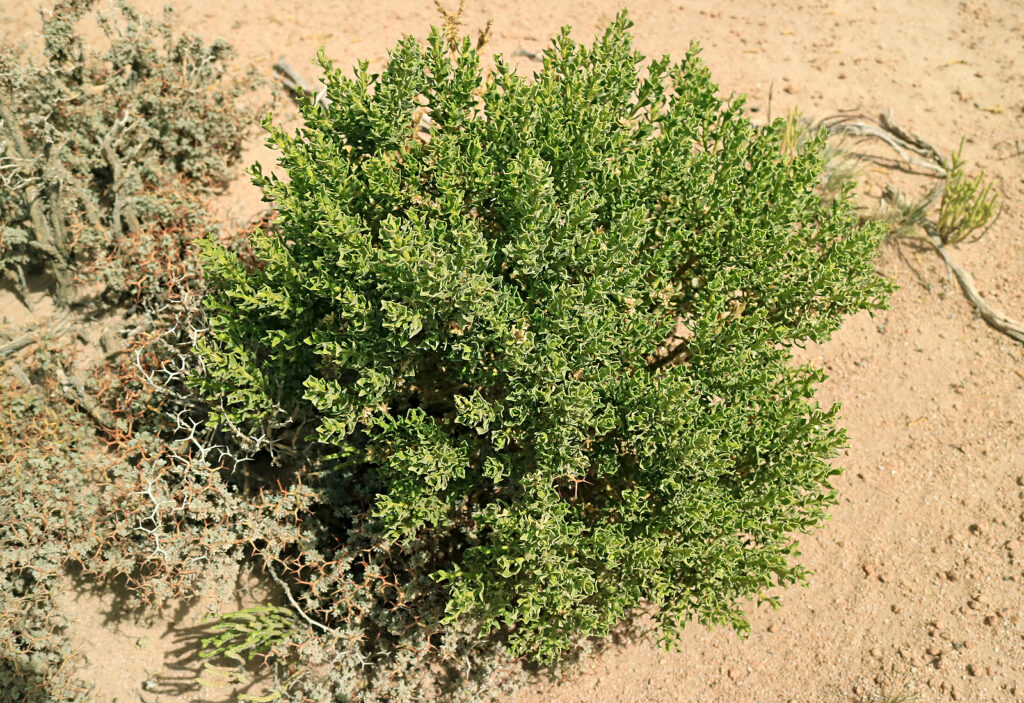Baccharis is a tough evergreen to semi-evergreen shrub with glossy deep green leathery leaves. It bears insignificant flowers.
Baccharis can tolerate poor, sandy, or salty soil. It can tolerate heat, wind, and salt spray.
Baccharis is a genus of more than 300 species of trees, shrubs, and perennials; all are native to North and South America. Only a few shrubby species are used as ornamentals in warm temperate gardens.
One note: female Baccharis plants produce masses of tiny seeds in cottony fibers that can be messy. Most nurseries offer seedless male plants.
Get to know Baccharis
- Plant type: Evergreen or deciduous shrubs
- Growing zones and range: Zones 3 to 7
- Hardiness: Hardy to Zone 4
- Height and width: Size varies with varety form 12 inches tall to 12 feet (4m) tall and wide
- Foliage: Wall glossy, leathery green leaves
- Flowers: Inconspicuous male and female flowers borne on separate plants
- Fruit: Female plants produce cottony seed clusters that can make a mess when blown by wind.
- Bloom time: Spring into summer
- Uses: Plant in difficult situations; will withstand heat, wind, poor soil
- Common name: Groundsel bush, coyote bush
- Botanical name: Baccharis
- Family name: Asteraceae
- Origin: Woodland margins of North and South America

Where to plant Baccharis
- Plant Bacchris in full sun.
- Bacchris will grow in moist soils; it will thrive in moderately fertile soil.
When to plant Baccharis
- Set contianer-grown Baccharis in the garden in spring or autumn.
Planting and spacing Baccharis
- Space Baccharis 12 feet (4m) apart.
How to water and feed Baccharis
- Baccharis grows best in just moist soil. Established plants can withstand drought.
- Fertilize Baccharis with an all-purpose organic fertilizer in spring.
Baccharis care
- Baccharis does not need pruning but can be cut back by a third to stimulate growth.
- Baccharis will re-seed itself; remove seedlings if they appear where you don’t want them.
Baccharis pests and diseases
- Rusts and some fungal leaf spot can occur.
Baccharis propagation
- Sow Baccharis seeds in containers in a cold frame in spring.
- Root softwood cuttings in summer.
Baccharis varieties to grow
- Baccharis halimifolia. Groundsel, salt bush. Semievergreen to deciduous shrub grows to 12 feet tall and wide. Gray-green leathery, elongated oval leaves to 3 inches long with coarse teeth. Small white flowers bloom in open clusters in late summer, after which female plants develop clouds of unusual silky white seeds heads. Tolerates saline soil in dunes, tidal flats, and ditches. Needs regular to moderate water.
- B. pilularis. Dwarf coyote brush. Evergreen shrub grows to 10 feet tall and wide. Native to central California coast. Makes a dense, billowy, bright green mat, 8 to 24 inches tall and 6 feet wide; toothed, ½-in. leaves are closely set on branches. Use as a bank or ground cover for low-maintenance areas. Moderate to little water. Male varieties include ‘Twin Peaks’, with small, dark green leaves grows to 12 inches high and 6 feet wide, and ‘Pigeon Point’, which has larger, lighter green leaves and grows faster.



